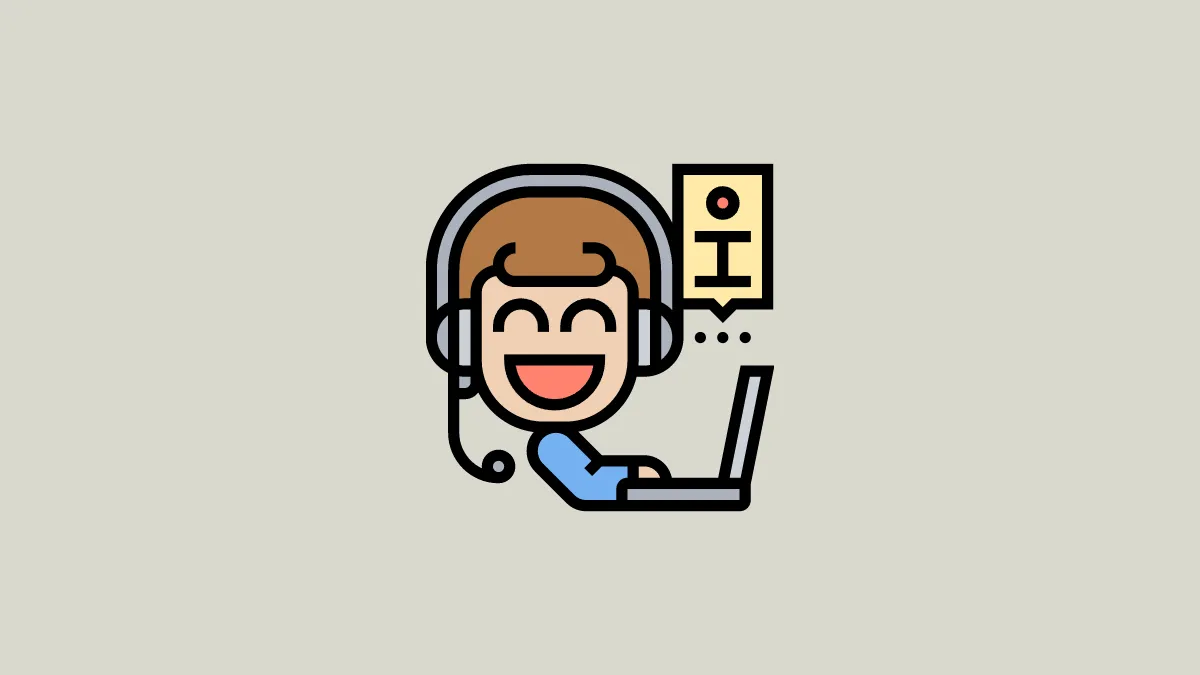Assisting someone with computer issues is a breeze when you're physically present. However, remote troubleshooting over the phone can quickly become a frustrating experience filled with miscommunications and confusion. Thankfully, Windows 11 offers a solution called Quick Assist that enables users to remotely access another person's computer, making it much easier to provide assistance.
What is Quick Assist in Windows 11
Quick Assist is a built-in feature in Windows 11 (also available in Windows 10) that enables a user to remotely access and control another person's computer. This tool facilitates a remote connection, allowing one user to assist another with troubleshooting issues directly on their PC. While it shares similarities with the older Windows Remote Assistance tool, Quick Assist offers enhanced features such as the ability for the helper to use their own keyboard layout and a pause function during the assistance session.
Whether you're offering help or in need of support, Quick Assist makes the remote assistance process straightforward and user-friendly.
Using Quick Assist in Windows 11
To use Quick Assist, you don't need to install any additional software—it's built right into Windows 11. However, locating the app can be a bit tricky since Microsoft has moved it in this version of Windows. The easiest way to open Quick Assist is through the Search function.
Step 1: Click on the 'Search' icon in the taskbar.

Step 2: Type Quick Assist into the search bar and select the app from the search results.
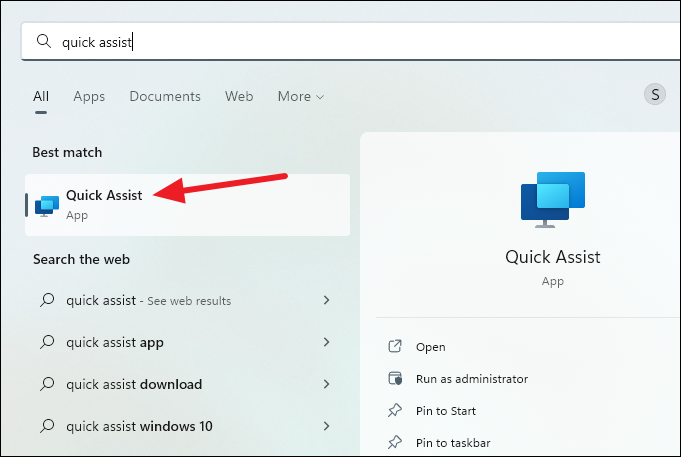
If for some reason the Search function isn't available, you can access Quick Assist via the Start menu.
Step 3: Open the Start menu and click on 'All Apps'.

Step 4: Scroll down the list of apps and select 'Windows Tools'.
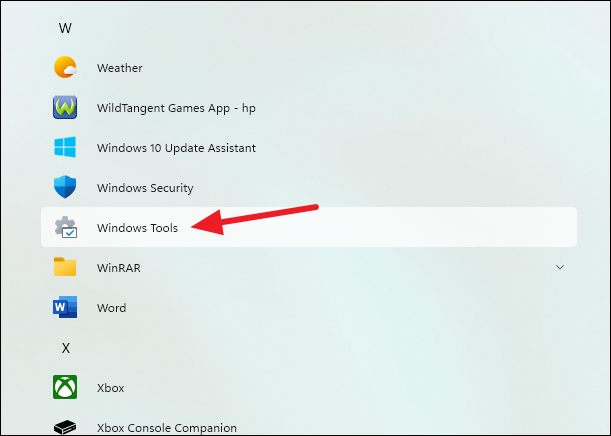
Step 5: In the Windows Tools window, find and double-click 'Quick Assist' to launch the app.
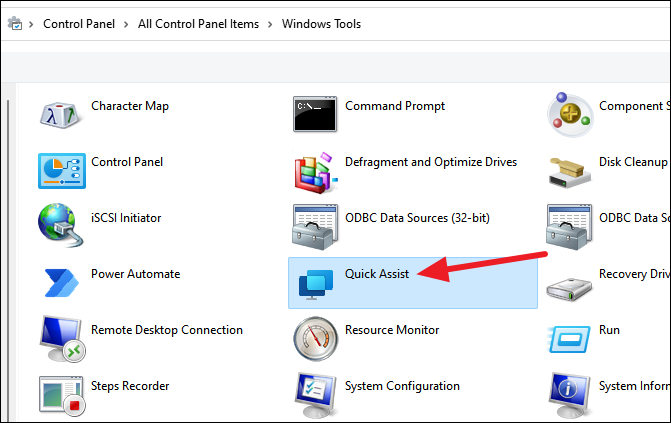
Now that you have Quick Assist open, you can proceed to either offer assistance or request help.
Using Quick Assist to help someone
If you're providing assistance to someone else, follow these steps to connect to their computer.
Step 1: In the Quick Assist app, under 'Give assistance', click on 'Assist another person'.

Step 2: Sign in with your Microsoft account. Enter your email address and password. You can also choose to sign in with a GitHub or organization account if applicable. Decide whether you want to stay signed in, especially if you're on a personal computer.
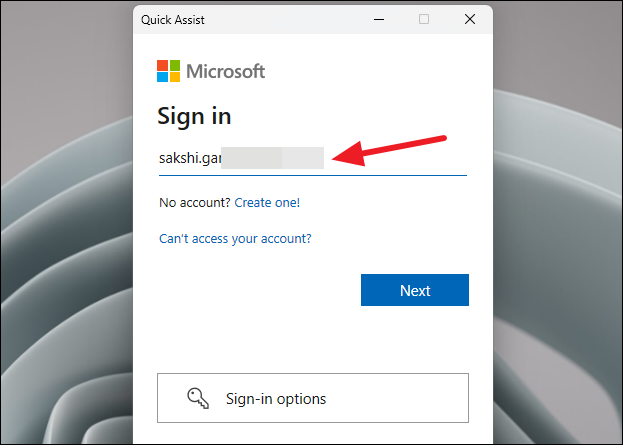
Step 3: After signing in, a security code will be generated. Share this code with the person you're assisting. You can copy the code and send it via email, text, or any other communication method. If you click on 'Provide instructions', Quick Assist will generate a brief guide that you can send to help them with the next steps.
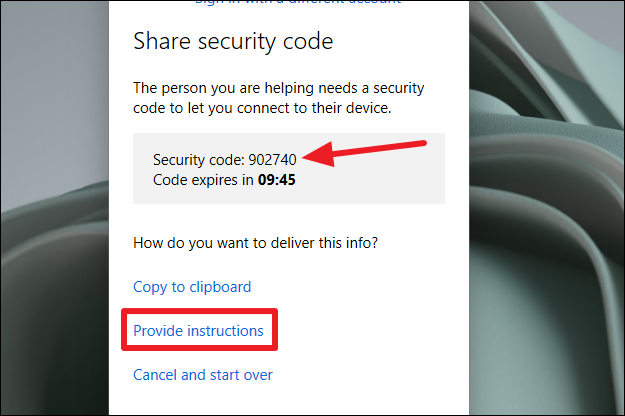
Note: The security code expires in 10 minutes, so make sure the person you're helping is ready to proceed before generating it.
Step 4: Once they've entered the code on their end, wait for the connection to be established.
Step 5: When prompted, choose whether you want to 'Take full control' or 'View screen' of the other person's computer. Select the option that suits your needs and click 'Continue'.

Step 6: The person you're assisting will receive a prompt to allow the connection. Once they click 'Allow', the remote session will begin.
Step 7: During the session, you'll see their desktop, and if you chose to take full control, you can navigate their system as if you were sitting in front of it. A toolbar at the top of the screen provides additional options such as selecting a monitor, annotating, viewing full screen, opening Task Manager, restarting, pausing, or ending the session.
Step 8: After you've resolved their issue, you can end the session by clicking the 'End' button in the toolbar.
Using Quick Assist to get help
If you're seeking assistance from someone else, it's important to ensure that you trust the person before allowing them access to your computer. Scammers may attempt to gain control of your system under false pretenses. Before proceeding, close any personal or sensitive documents and applications to protect your privacy.
Step 1: Open the Quick Assist app on your computer.
Step 2: Under 'Get assistance', enter the security code provided by the person assisting you. Then, click on 'Share screen'.
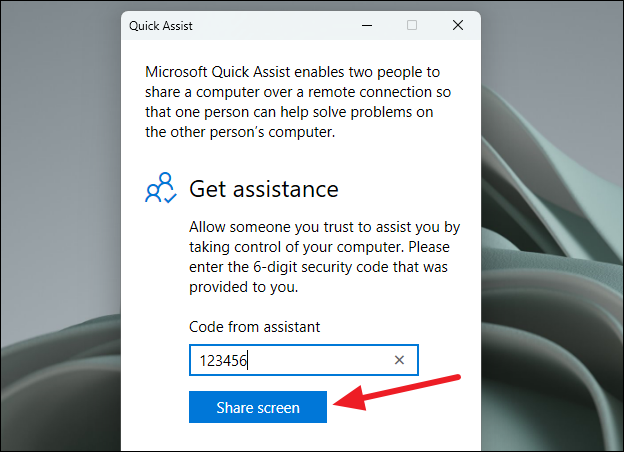
Step 3: Wait while the helper initiates the connection. They will choose whether to take full control or just view your screen.
Step 4: A permission prompt will appear, displaying the helper's name and the level of access they've requested. Confirm that the person is the one you expect and review the permissions. If everything looks correct, click 'Allow'.
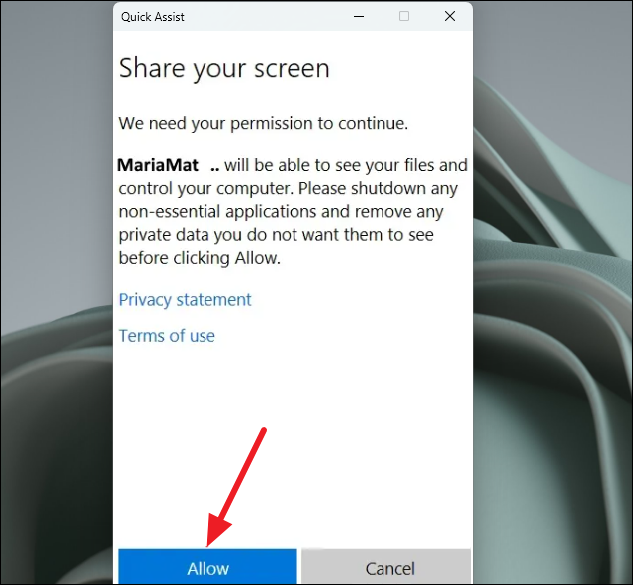
Note: If you suspect any malicious activity or if the request seems unexpected, click on the 'Report abuse' link and then select 'Cancel' to terminate the session.
Step 5: After you allow access, it may take a few moments for the connection to establish. Once connected, the helper can assist you by viewing or controlling your computer as per the permissions granted.
Quick Assist simplifies the process of remote assistance on Windows 11, making it accessible and straightforward for users of all levels. Whether you're helping someone troubleshoot an issue or seeking support yourself, Quick Assist provides a secure and efficient way to navigate remote assistance.

